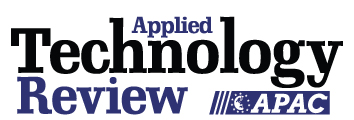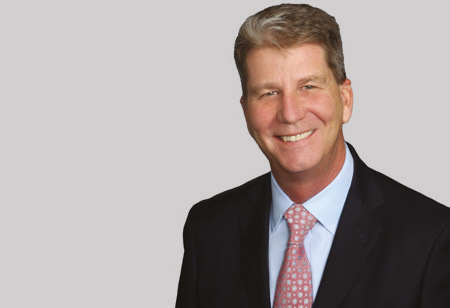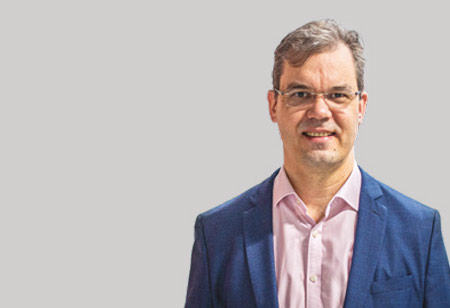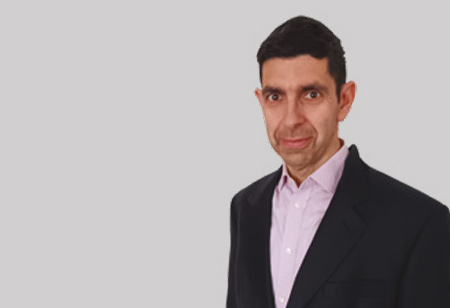THANK YOU FOR SUBSCRIBING

A New Dawn of Advancements in Sensor Technology and Power Electronics
Dr. Faical Turki, Head of Power Electronics, Compleo

 Dr. Faical Turki, Head of Power Electronics, Compleo
Dr. Faical Turki, Head of Power Electronics, CompleoDr. Faical Turki, Head of Power Electronics at Compleo, has expertise in wireless power transfer. He significantly contributed to the Transrapid maglev train and electric vehicle charging technology. His work at Paul Vahle GmbH & Co. KG, a mid-sized German company, played a crucial role in industrialising wireless power transfer. He enabled successful projects for powering robots and automated guided vehicles, improving automation and manufacturing processes. Dr. Turki's dedication l and notable work with renowned automotive brands like Audi and Porche led him to join the Founding Standardisation Committee in Germany. His inspiring journey continues to shape the power electronics landscape, leaving a lasting impact on the industry.
This article is based on an inetrview with Applied Technology Review Europe and Turki, where he shares his insights on the challenges and emerging trends in the sensor technology industry and his experience in the domain.
WHAT ARE SOME OF THE MOST SIGNIFICANT CHALLENGES FACED DURING THE DEVELOPMENT PHASE OF WIRELESS POWER TRANSFER TECHNOLOGY?
I oversee charging infrastructure, focusing on high-power chargers (HPC). My role includes piloting clinics and designing HPC systems. Beyond power electronics, sensors play a pivotal role. Proximity sensors for driver detection are crucial, enabling display adjustments, enhanced lighting, and guiding driver behaviour through HMI.
Emerging sensor tech is reshaping charging infrastructure. Future demands will include detecting driver interactions, and amplifying sensor importance. Cost-effective technologies can reduce hardware expenses. Sensors for measuring electrical and physical values like current, voltage, and temperature are impactful. Current and voltage sensors, especially for high levels like 1000–2500 volts, demand galvanic separation for accuracy, driven by standardisation.
Homologation necessitates higher standards in accuracy, stability, precision, and speed. These factors deeply impact power electronics. Galvanic separation ensures clear isolation between the measured voltage and the circuit. Meeting strict stability, precision, and tolerance demands in components is challenging. Our commitment to pushing power electronics boundaries remains unwavering.
ARE THERE ANY EXCITING RECENT TECHNOLOGICAL ADVANCES THAT YOU’VE SEEN OR WORKED WITH?
I’m deeply involved in our charging infrastructure, with a keen focus on high-power chargers (HPC). My role covers overseeing pilot clinics and designing HPC systems. While power electronics are central, other sensors are pivotal too. They detect drivers, riders, and external events.
Proximity sensors for driver detection are game-changers. They trigger display adjustments, enhance lighting, and guide driver behaviour via the human-machine interface (HMI). This isn’t directly linked to power electronics, but it’s reshaping charging infrastructure.
Cost-effective tech can trim hardware expenses. For instance, sensors measuring electrical or physical values like current, voltage, and temperature impact us significantly.
Notable changes are happening in current and voltage sensors, especially for high currents and voltages, foreseeing up to 1000 or even 2500 volts. This demands galvanic separation for precise measurement, driven by industry standards.
"We observe a clear trend toward improving sensors, especially in terms of their measuring speed and the speed of the circuitry supporting them. Microcontrollers play a significant role in processing these signals effectively"
Meeting homologation standards demands superior accuracy, stability, precision, and speed in the circuit, impacting power electronics. High voltage mandates galvanic separation to isolate measured voltage from the circuit. This places rigorous demands on component stability, precision, and tolerance, a real challenge.
Our commitment to pushing power electronics boundaries remains unwavering. We’re at the forefront of the evolving sensor landscape, ensuring charging infrastructure is smarter, efficient, and future-proof.
WHAT ARE THE KEY FACTORS DRIVING ADVANCEMENTS IN SENSOR TECHNOLOGY, MICROCONTROLLERS, AND DIGITAL SIGNAL PROCESSORS (DSPS) IN THE CONTEXT OF VOLTAGE AND CURRENT MEASUREMENT, AND HOW DO THESE ADVANCEMENTS IMPACT POWER SYSTEMS AND GRID STABILITY?
We observe a clear trend toward improving sensors, especially in terms of their measuring speed and the speed of the circuitry supporting them. Microcontrollers play a significant role in processing these signals effectively. There are two primary sensor categories to consider: the first involves sensors that focus on measuring voltage, and the second pertains to current sensors. In both cases, we are witnessing a drive for higher measurement speed, accuracy, and precision.
To achieve these goals, galvanic separation is essential, ensuring accurate readings and safe operation. This combination of requirements leads to greater flexibility and faster processing capabilities of digital signal processors (DSPs) or microprocessors, enabling the creation of highly dynamic systems. These advanced systems open opportunities for developers to design high-dynamic control algorithms.
The real impact comes when we consider the significance of controlling voltage and current. By having precise control over these two factors, we effectively control power. This means we can not only shape currents and voltages more effectively, but we can also contribute to the grid’s stability. Ultimately, this technology plays a vital role in enhancing the overall efficiency and performance of power systems, thereby benefitting the market and society.
HOW DO DISTRIBUTED RENEWABLE ENERGY SOURCES, LIKE WIND POWER, IMPACT THE REQUIREMENTS FOR GRID STABILITY, AND WHAT ROLE CAN HIGH POWER CHARGERS (HPC) PLAY IN STABILISING THE POWER GRID WHILE CHARGING ELECTRIC VEHICLES?
Today’s power grid faces unprecedented challenges. The rise of renewable energy sources, like unpredictable wind power, introduces volatility. The grid must rapidly adapt to these fluctuations to stay stable. This is especially critical in places like Germany, where distributed renewables are prominent.
In this evolving landscape, high-power chargers (HPC) at significant load sites play a unique role. Instead of being power sources, they draw power from the grid to charge electric vehicles. Surprisingly, they can indirectly stabilise the grid in multiple ways.
HPC chargers manage harmonics, reactive power, and power control based on the grid’s state and frequencies. They also employ grid-forming algorithms, a growing trend, to stabilise grid frequencies. This means electric vehicles become grid-stabilising assets when charged at HPC stations.
In essence, HPC chargers offer a chance to enhance overall grid performance. They help manage fluctuations and demands, turning electric vehicles into tools for grid stability. As renewable energy continues to grow, this integration becomes a promising solution to meet the ever-increasing demands on the power grid.
HOW DOES BI-DIRECTIONAL EV POWER FLOW IMPACT GRIDS, SUPPORTING RENEWABLE ENERGY TRANSITIONS WHILE ENSURING RELIABILITY DURING EUROPEAN DEMAND PEAKS?
Another important aspect is the concept of bidirectional power flow. With this capability, electric vehicles can play a significant role in grid stabilisation by providing feedback energy from their batteries back to the grid, when necessary, even for short periods. Imagine a scenario where the demand on the grid is high, and there is little or no renewable energy production from sources like wind or solar. In such cases, electric vehicles can step in and contribute their energy to balance the power characteristics of the grid without depleting their entire battery.
This dynamic process of using electric vehicle batteries to stabilise the grid eliminates the need for large, connected traditional generators. This represents a fundamental shift in the power grid paradigm, particularly in Europe and Germany. The political trend in Germany is towards embracing more renewable energy production and gradually phasing out traditional generators.
Electric vehicles are emerging as a vital component in achieving a greener and more sustainable energy landscape. By leveraging their bidirectional power flow capabilities, electric vehicles contribute to grid stability, ensuring a reliable power supply even during periods of high demand and limited renewable energy generation. This transition marks a significant step towards a cleaner, more efficient energy future.
WHAT ADVICE WOULD YOU GIVE TO SOMEONE AS FIRING TO MAKE A MARK IN THE FIELD OF POWER ELECTRONICS AND SENSOR TECHNOLOGIES IN THE SEMICONDUCTOR INDUSTRY?
Simon Sinek’s book ‘Start with Why’ is a great inspiration for leadership and employee development. In the past 20 years, the Way of Working has evolved significantly, with people now motivated by understanding the purpose behind their work, embracing a higher vision, and a profound mission. True leadership empowers individuals to achieve their aspirations independently, fostering effective communication and a shift in company culture. Post-corona, with transformations in the last few years, empowerment and collective intelligence have shaped the new working model. Leadership is not about dictating, but harnessing the potential of employees to achieve the industry’s genuine vision and goals.
Read Also























ON THE DECK